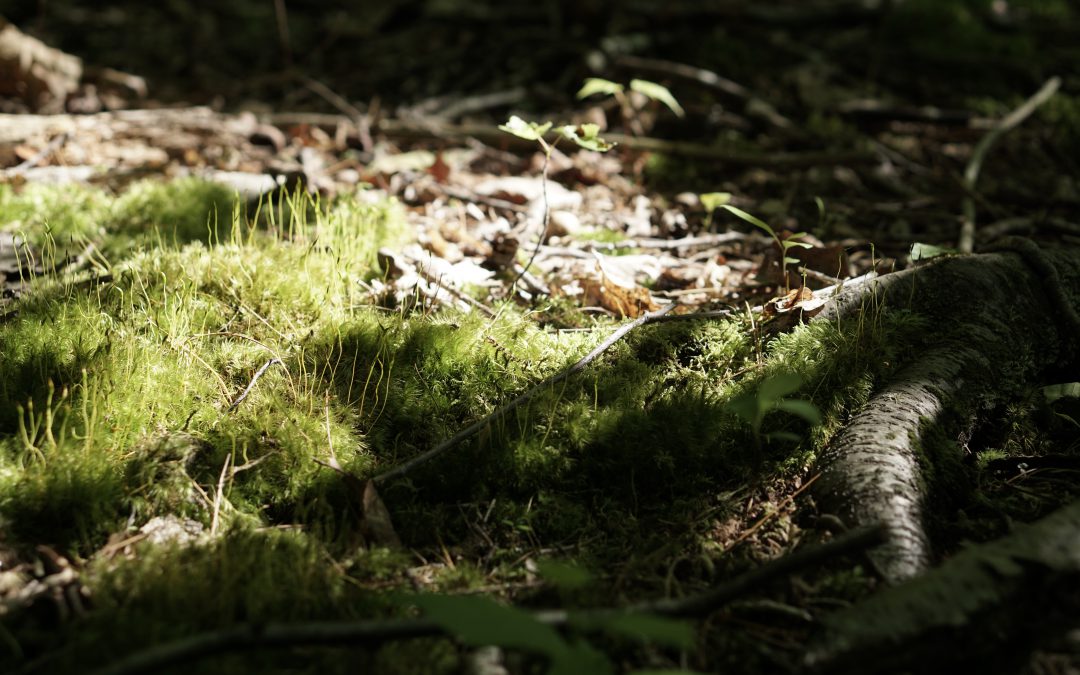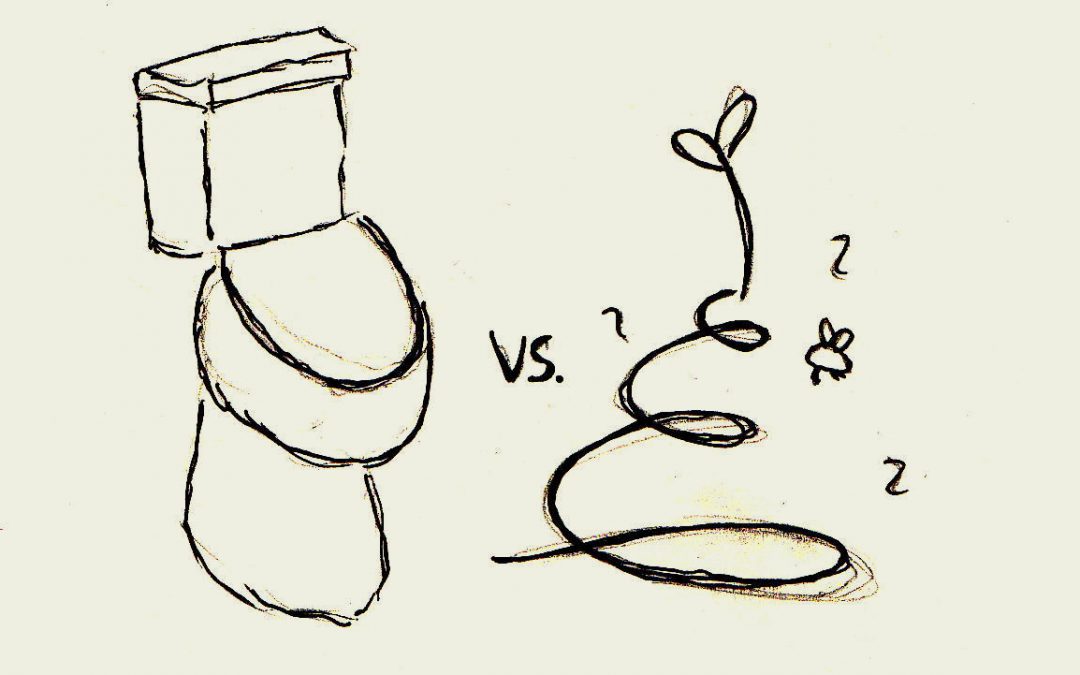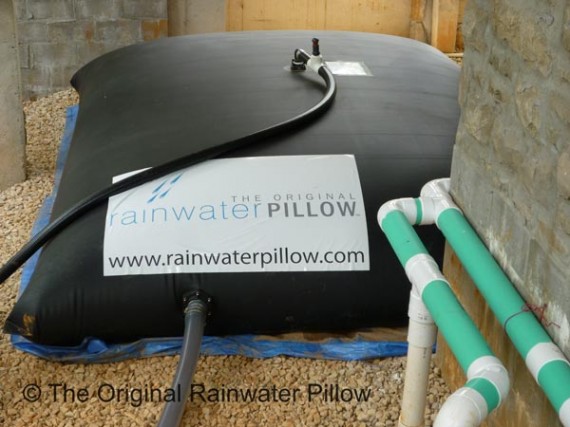
by William | Dec 9, 2020 | Net Zero
Dear Readers,
Thank you so much for sticking with us. I know our blogs have been a lot of research and ideas…although we just purchased a piece of land, we have a lot of design work to do before we start building anything!
As we began with Living Building Challenge: The Petal of Place, we want our lil’ home, The Seed, to meet Living Building Challenge standards (in addition to PHIUS, of course). In order to meet those standards, the home or building must adhere to the seven ‘petals’ and their imperatives. I know the term ‘petals’ sounds cheesy, but they do set a high expectation for how homes are built, lived in, and what they give back to the ecosystems they are located in.
The Water Petal alone is going to be a tough one to meet. However, it is a conundrum that we have already been pondering. Our goal is to rely totally off of our rainwater pillow for all of our potable and non-potable water needs. This, in turn, means that we need to live so water consciously that we are 100% all the time, 7 days a week, 365 days a year, prepared for a drought. It is not going to be easy, but if you have read our composting toilet and recirculating shower blogs, then you know that we have a few ideas bounding about. But are these ideas enough for us to meet the Living Building Challenge’s criteria for the Water Petal?

by William | Jul 8, 2020 | Healthy Living, Uncategorized
Dear Readers,
Key Term(s)
Biophilic Design: In simple terms, it is an attempt to bring the natural, outdoor environment, into a home or other indoor space. For example, the usage of raw wood (cross laminated timber!), windows giving views of the outdoors, and moss walls!
For fellow country woodland dwellers, biophilic design may seem unnecessary. All we have to do is walk out our back door, and BAM!
Moss, trees, leaves, ferns, birds, deer, foxes, streams, the occasional goat-eating bear…take a deep breath of earthy air..
…and continue with your day. For more urban-ish inhabitants, their world is less of the natural and untamed…and more of the ‘constructed.’ Especially for those trapped in certain urban areas by economic and social constraints, they walk out onto the street to man-made lights, blacktop, concrete, controlled lawns, sirens, fences, litter, the smell of people and vehicles…
Biophilic design is a way to bring the natural, the color green, back into manipulated, human controlled, environments. This design element improves the overall physical, mental, and emotional health of inhabitants of constructed spaces.
While biophilic design may be more critical to urban environments due to their lack of easy access to the natural, it can still be instilled and valued in rural homes and buildings as well.
For example, just because William and I have both grown up in the middle of the woods, and because we want to build our home and raise our family in the middle of the woods, does not mean we cannot also incorporate biophilic design into our home.
In my parents’ house, I sometimes intentionally leave all the doors open, walk from the outside to inside barefoot, and allow all of the moss, leaves, bugs, and sticks that my bare feet, the wind, and the dogs carry in to remain strewn on our cork floors.
My mom doesn’t appreciate this interpretation of biophilic design…So, William and I are investigating more, ‘less messy,’ ways of having ‘biophilic design’ in our home. As I have mentioned the word probably three times by now, one way is ‘moss.’

by William | Jun 24, 2020 | Net Zero, Small Footprint
Dear Readers,
If you have read the “Our Waste Goes Where?” blog (and if you have, I applaud you..that was a rough one..) or are familiar with how wastewater treatment generally works, whether it be a septic tank or a treatment facility, you may be wondering how the Clivus Multrum composting toilet and greywater system is beneficially different. I know that I was certainly curious…I mean, the results are similar. Most of the solid and liquid waste, whether flushed or composted in a hole, eventually find their way back into the great world as either fertilizer or drainage. So, what makes the idea of not just specifically the Clivus Multrum system, but a composting toilet in general, so enticing?
Since William and I are looking to build The Seed in a rural area, I am going to directly compare a composting toilet and greywater system to what is most often offered to fellow rural inhabitants…a septic tank.
Composting Toilet
A composting toilet is, for us, preferable to a septic tank for three main reasons.
1) It makes the home, and encourages the inhabitants within it to be, holistically self-sustaining, or, our version of net-zero living. Utilizing a composting toilet allows the home to have a reduced reliance and impact on the physical site it is on.
There is no digging a sand mound, or installing deep in the earth a septic tank. The solid waste that settles in the tank does not need to be pumped out by a big truck, and then subsequently dropped off at a public wastewater treatment facility.
Rather, the solid and liquid waste that the inhabitants generate rest in separate bins until they can be returned to the earth as stable soil fertilizer. The owner or resident (William and I!) can do this themselves with a simple and common tool…a shovel.
A composting toilet also results in a reduction of the home’s overall water usage. If you opt for the standard composting toilet, then you use no water when contributing your waste to compost. None. Even if you choose the foam flush composting toilet, you only use 6 ounces of water per flush. If you are relying on a rainwater pillow for your water supply, this is a HUGE plus…as well as a beautiful help in achieving net-zero living.
The greywater garden for the greywater filtration and distribution would be the only alteration required to the land…and that is because we would physically be planting a garden which would aid in filtration and dispersal. Yay, plants!
Not only would a composting system aid the home in being holistically net-zero, but it would better enable the inhabitants to take account for their own waste. Before researching for the blog, “Our Waste Goes Where??”, I honestly had no idea what happened to my processed nutrients. I figured it went to our septic tank, which I knew had to be pumped once every couple years…but I had no idea that it eventually went to a wastewater treatment facility, and what that process looked like. Someone else took care of it. All I had to do was sit on the toilet, do my thing, and flush. Done. The mess was no longer mine. Because William and I intend to raise children in this crazy idealistic home of ours, we see the composting toilet as a great life lesson for them…in William’s (and a lil’ of Shelby’s words), it will be “teaching our children to not expect other people to clean up their nasty sh…enanigans.”

by William | May 13, 2020 | Net Zero, Small Footprint
Dear Readers,
In addition to our future home, The Seed, being designed upon pins and with super thick, crazy well-sealed walls, we want all of the water that we use to be gathered from precipitation and stored in a pillow. This pillow will be stored within our building envelope (so that it is insulated) and underneath our floor. Imagine a giant waterbed in your basement that’s purpose is to provide you with showers and clean drinking water. That’s it.
The rainwater collection system we intend to use is called The Original Rainwater Pillow, created and sold by a gentleman named Jim Harrington. Based in Georgia, he was inspired to develop the rainwater pillow in 2008 during a period of intense drought in his area. Six years later, in 2014, his Original Rainwater Pillow won the U.S. Green Building Council’s (USGBC) Best of Building award for Best Product for Water Efficiency! We are excited to test out the Original Rainwater Pillow in The Seed…but first, how does it work??
How it works:
The Pillow tanks are specifically built horizontally to fit into ‘wasted spaces.’ Think crawl spaces, under decks or porches, basements…that way, the need for excavation for cisterns or a giant tank in the yard is eliminated. And what is additionally so genius about the Pillows, is that they are relatively easy to install- like a deflated air mattress, they are easy to transport and lighter to move around (which is wonderful for prefabrication mind-sets). We intend to keep our Pillow within the thermally controlled building envelope of our home: above the pins and right below our floor.
Rainwater harvesting all begins with rain and a roof. Your roof is kind of like your ‘rain catcher’…the larger the square footage that your roof covers, the more potential you have for more water. As the rain runs from your roof to the gutter system, it will travel to your downspouts and then go through a pre-filter. The pre-filter is intentionally ‘coarse.’ It allows water to move quickly through it during heavy downpours, while simultaneously separating leaves or other large debris.

by William | Mar 25, 2020 | Healthy Living
Gardening: Raising the Beds, Bonus Blog Dear Readers, Around mid March my mom and I began our veggie garden prepping… which included a couple of endeavors. One: We needed to find a sunny spot where our eventual human substances would thrive. But, because we live...





